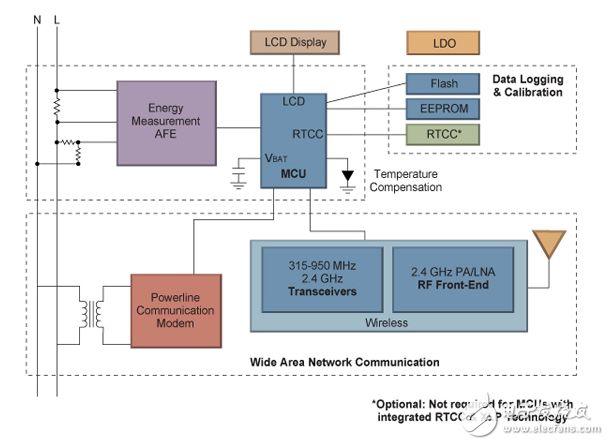
资料下载

智能仪表中的精确功率测量。第2部分:元件的指定
智能仪表中的精确功率测量。第2部分:元件的指定
为满足先进的计费和能源管理服务的需求,MCU驱动今天的智能电表和分户计量系统采用高精度的模拟前端(AFE)电路和复杂的数据处理软件。这两部分系列的第一部分概述了现代仪表中使用的基本功能需求和体系结构方法。这一部分将深入讨论指定组件的一些设计问题,这些组件确保智能仪表将为其目标应用程序提供必要的精确性和性能。
前端的基础知识
智能电表的能量测量前端的基本要素是电流传感器、模数转换器(ADC),以及专用MCU或仪表主机处理器用来解释原始数据的算法(图1)。

Resistive shunts have traditionally been the most commonly-used current sensing technique for residential and other low-to-medium-power applications. Shunt-based sensors use a low-value resistor (typically 100 µ? to 500 m?) to produce a small but reliable voltage drop from which the current is calculated. Although they are simple, inexpensive, and relatively reliable, Ohm’s Law dictates that shunt-based current sensors have a limited upper current range due to self-heating and power loss. Advances in the accuracy and dynamic range of ADCs have made it possible to use lower shunt resistances, but they remain impractical for larger commercial and industrial applications. Unlike the inductively based sensors that will be discussed next, resistive shunts require separate isolator elements if they are used in poly-phase systems. Nevertheless, shunt-based sensors’ lower cost and relative immunity against tampering techniques that use a DC magnetic field, still make them popular for residential applications.
声明:本文内容及配图由入驻作者撰写或者入驻合作网站授权转载。文章观点仅代表作者本人,不代表电子发烧友网立场。文章及其配图仅供工程师学习之用,如有内容侵权或者其他违规问题,请联系本站处理。 举报投诉
- 相关下载
- 相关文章




